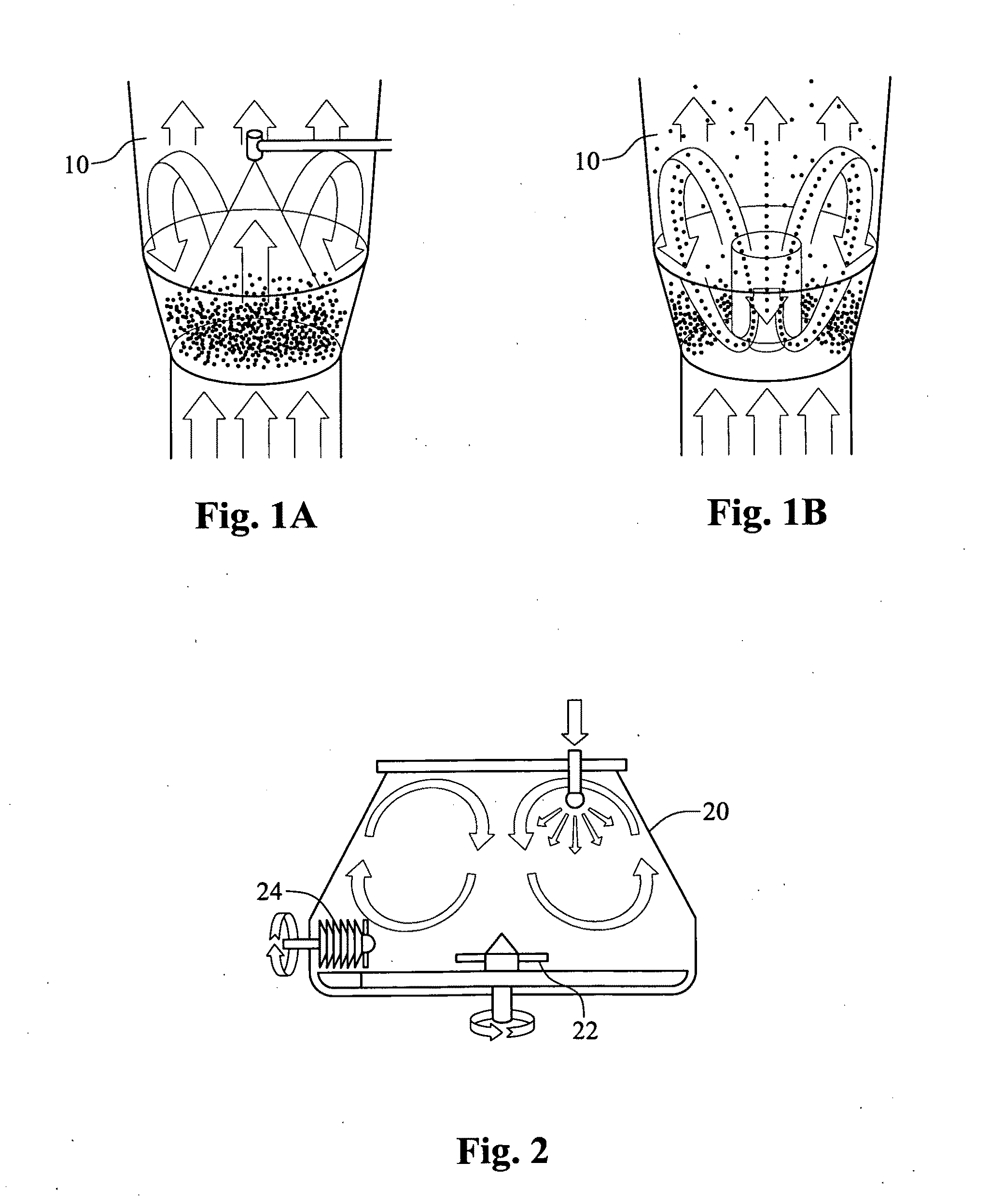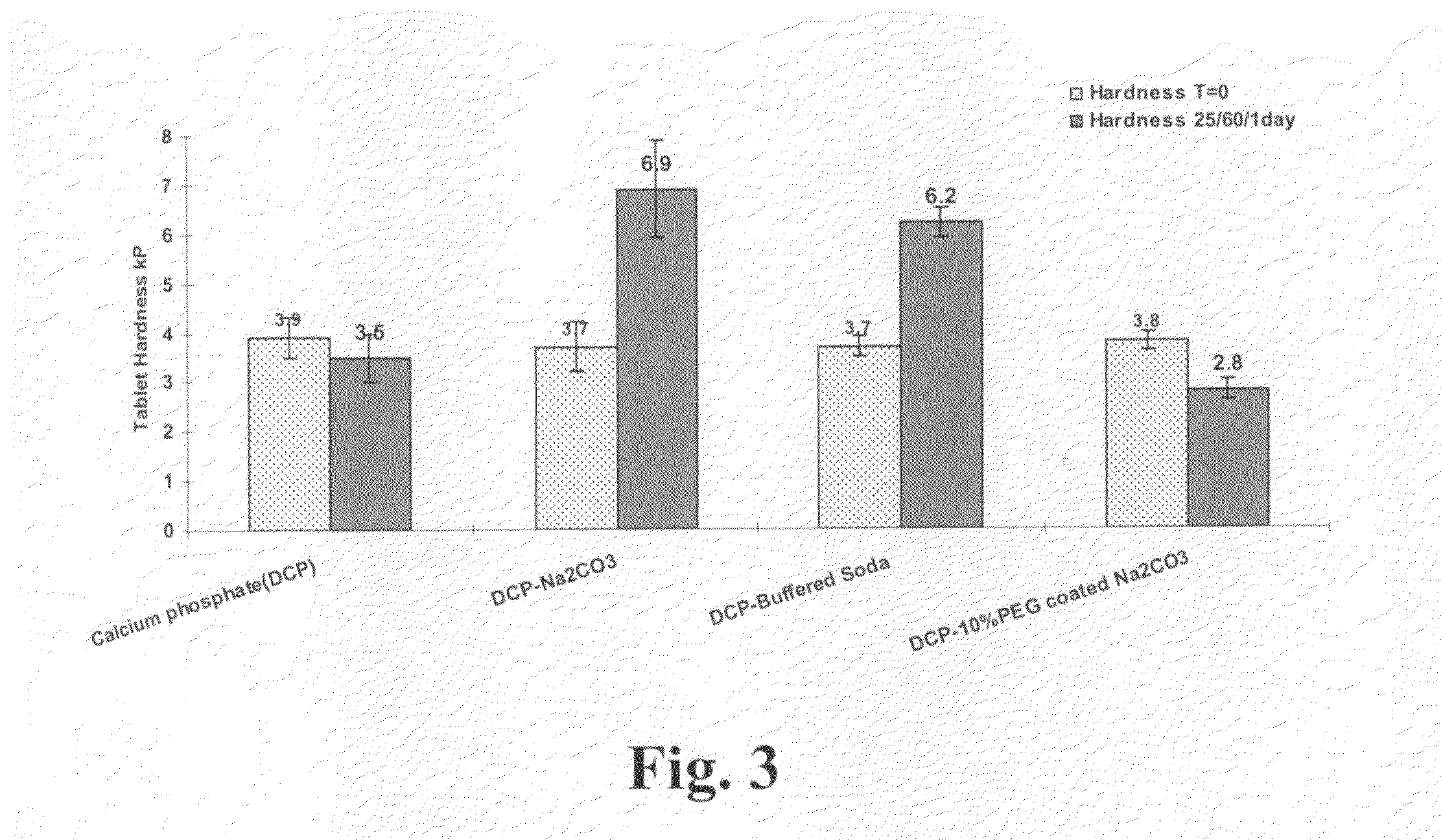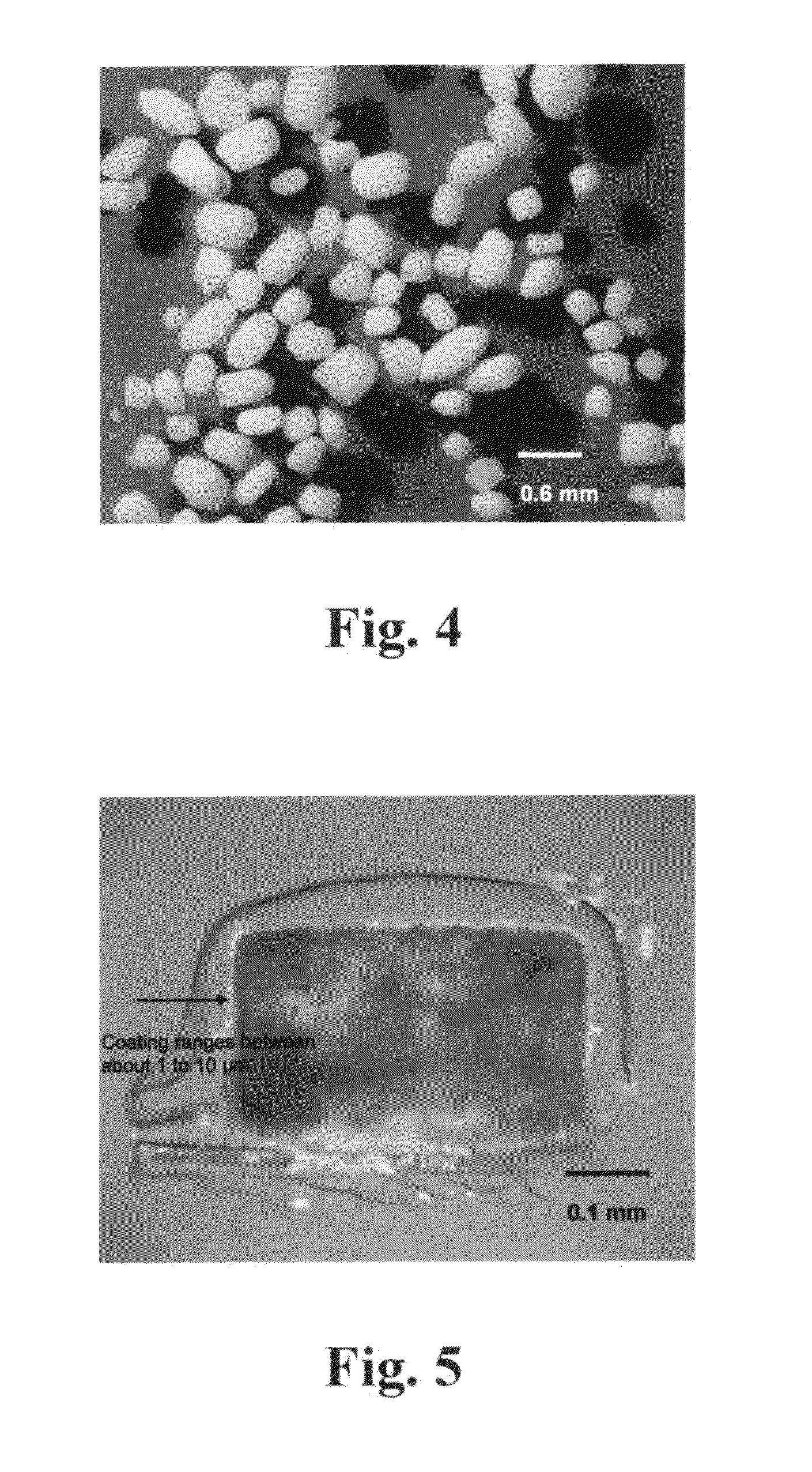Polyethylene glycol-coated sodium carbonate as a pharmaceutical excipient and compositions produced from the same
a technology of polyethylene glycol and sodium carbonate, which is applied in the direction of drug compositions, biocide, heterocyclic compound active ingredients, etc., can solve the problems of unstable sodium carbonate, affecting the dissolution profile of the composition, and becoming less useful
- Summary
- Abstract
- Description
- Claims
- Application Information
AI Technical Summary
Benefits of technology
Problems solved by technology
Method used
Image
Examples
example 1
[0053]Comparison of tablet hardening propensity of sodium carbonate and PEG-coated sodium carbonate was determined by measuring hardness of tablets containing each of sodium carbonate, buffered soda (individual particles of sodium bicarbonate and sodium carbonate), or PEG-coated sodium carbonate. Blends containing a 1:1 mixture of sodium carbonate (Na2CO3), buffered soda, or PEG-coated sodium carbonate, each with anhydrous dicalcium phosphate (DCP), were compressed to hardness of about 3.7 kP. A tablet of DCP alone was used as a control. TABLE 2 indicates the composition of each tablet compared in the study. The tablets were exposed to 25° C. and 60% relative humidity in open Petri dishes for 1 day and the hardness and moisture content were measured.
TABLE 2CalciumDCP-BufferedDCP-10% PEG coatedphosphate(DCP)DCP-Na2CO3SodaNa2CO3Ingredients(% wt / mg)(% wt / mg)(% wt / mg)(% wt / mg)Na2CO3 50 / 143.8 45 / 133.2PEG-3350 5 / 14.8Buffered Soda 43% 50 / 142Calcium 99.5 / 274.6 49.5 / 142.3 49.5 / 140.649.5ph...
example 2
Preparation of PEG-Coated Sodium Carbonate
[0055]The coating liquid was prepared by dissolving 50 g of polyethylene glycol 3350 mol. wt (PEG 3350) in 200 ml of (80:20) isopropyl alcohol and water. The solution of PEG 3350 was sprayed on sodium carbonate (450 g) in a planetary mixer while mixing for 17 minutes. The resulting granulated material was sieved in a 20 mesh sieve and transferred to a steel tray and dried in an oven for 24 hours at 60° C. FIG. 4 shows a stereomicroscopy picture of the granular material obtained by the above-described process. FIG. 5 shows the granular material obtained by the above-described process under a polarized light microscope.
[0056]The final material was quantified for amount of PEG (as wt %) in the coating layer. The moisture content of the final material was determined for this purpose. Additionally, the amount of sodium carbonate was determined by titration. The following equations 1, 2 and 3 were used to calculate the extent of PEG coating.
Gramso...
example 3
Preparation of PEG-Coated Sodium Carbonate
[0058]The coating liquid was prepared by dissolving 50 g of polyethylene glycol 3350 (PEG3350, mol. wt. 3350) in 200 ml of water. Sodium carbonate (450 g) was coated with the PEG 3350 solution in a bench top fluid bed granulator (FluidAir Model 002) using the bottom spray (Wurster coating) with further drying in the same granulator. The coating conditions used are detailed in TABLE 4 below. The coated particles were then discharged and sifted through a 20 mesh sieve. The final yield of PEG-coated sodium carbonate was 95.4%. FIG. 6 is a stereomicroscopy picture of the granular material obtained by the above-described process. The final material was quantified for amount of PEG (as wt %) in the coating layer as described above. Results for estimation of % PEG in the sample is shown in TABLE 5 below.
TABLE 4Inlet air temperature75° C.-80° C.Outlet air temperature (during coating, record only)37° C.Outlet air temperature (during drying, record on...
PUM
| Property | Measurement | Unit |
|---|---|---|
| Temperature | aaaaa | aaaaa |
| Fraction | aaaaa | aaaaa |
| Fraction | aaaaa | aaaaa |
Abstract
Description
Claims
Application Information
 Login to View More
Login to View More - R&D
- Intellectual Property
- Life Sciences
- Materials
- Tech Scout
- Unparalleled Data Quality
- Higher Quality Content
- 60% Fewer Hallucinations
Browse by: Latest US Patents, China's latest patents, Technical Efficacy Thesaurus, Application Domain, Technology Topic, Popular Technical Reports.
© 2025 PatSnap. All rights reserved.Legal|Privacy policy|Modern Slavery Act Transparency Statement|Sitemap|About US| Contact US: help@patsnap.com



